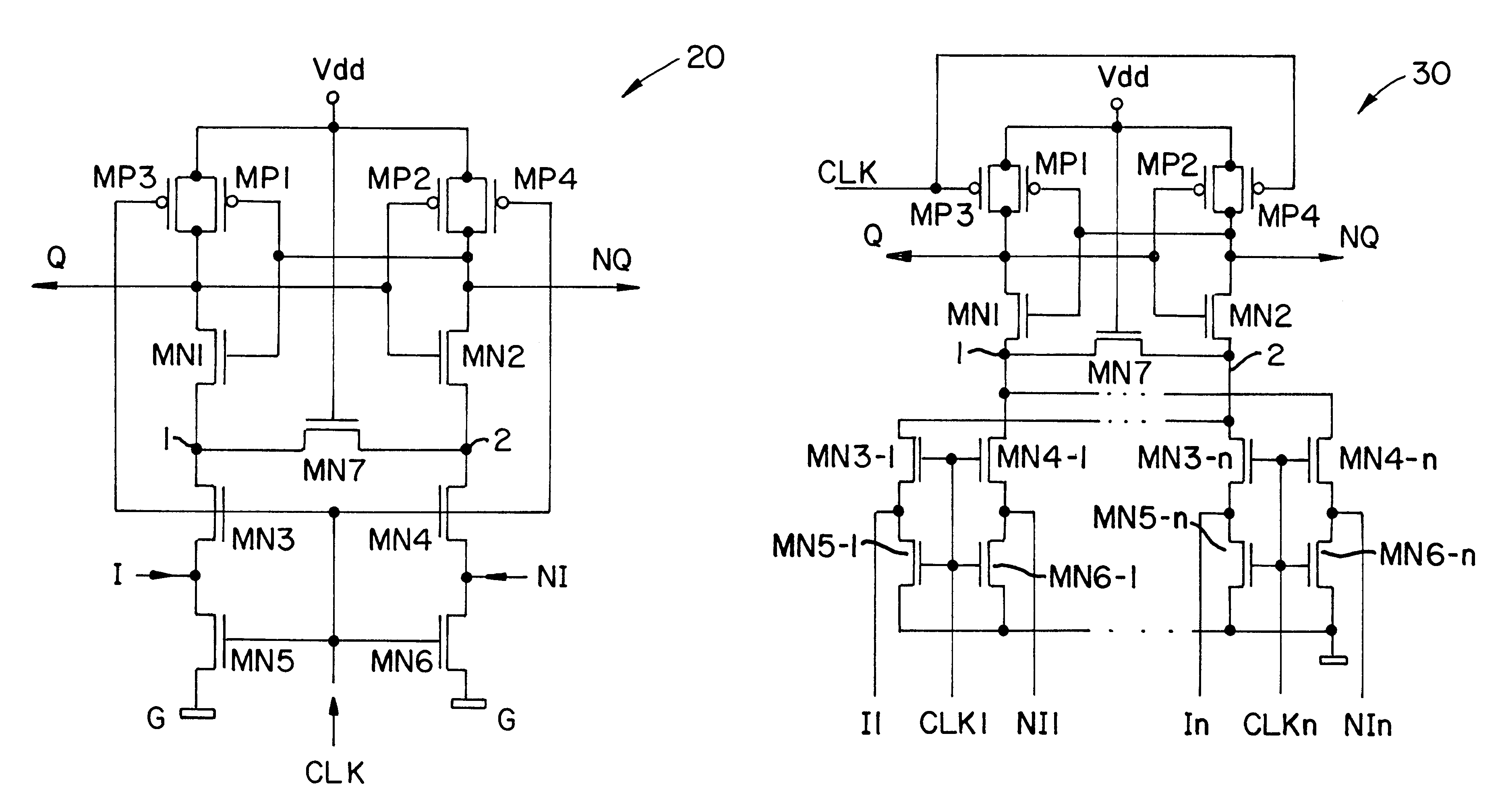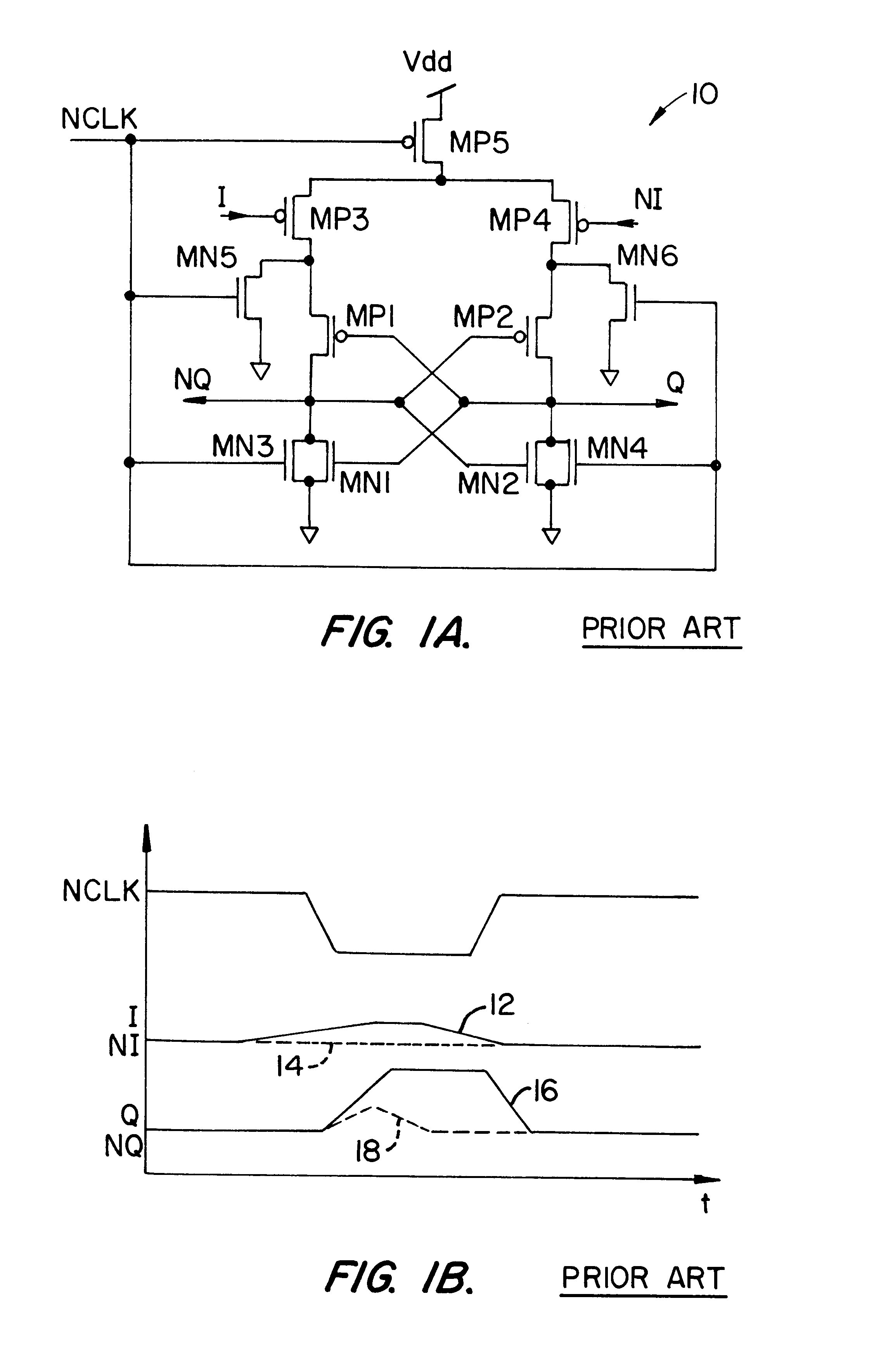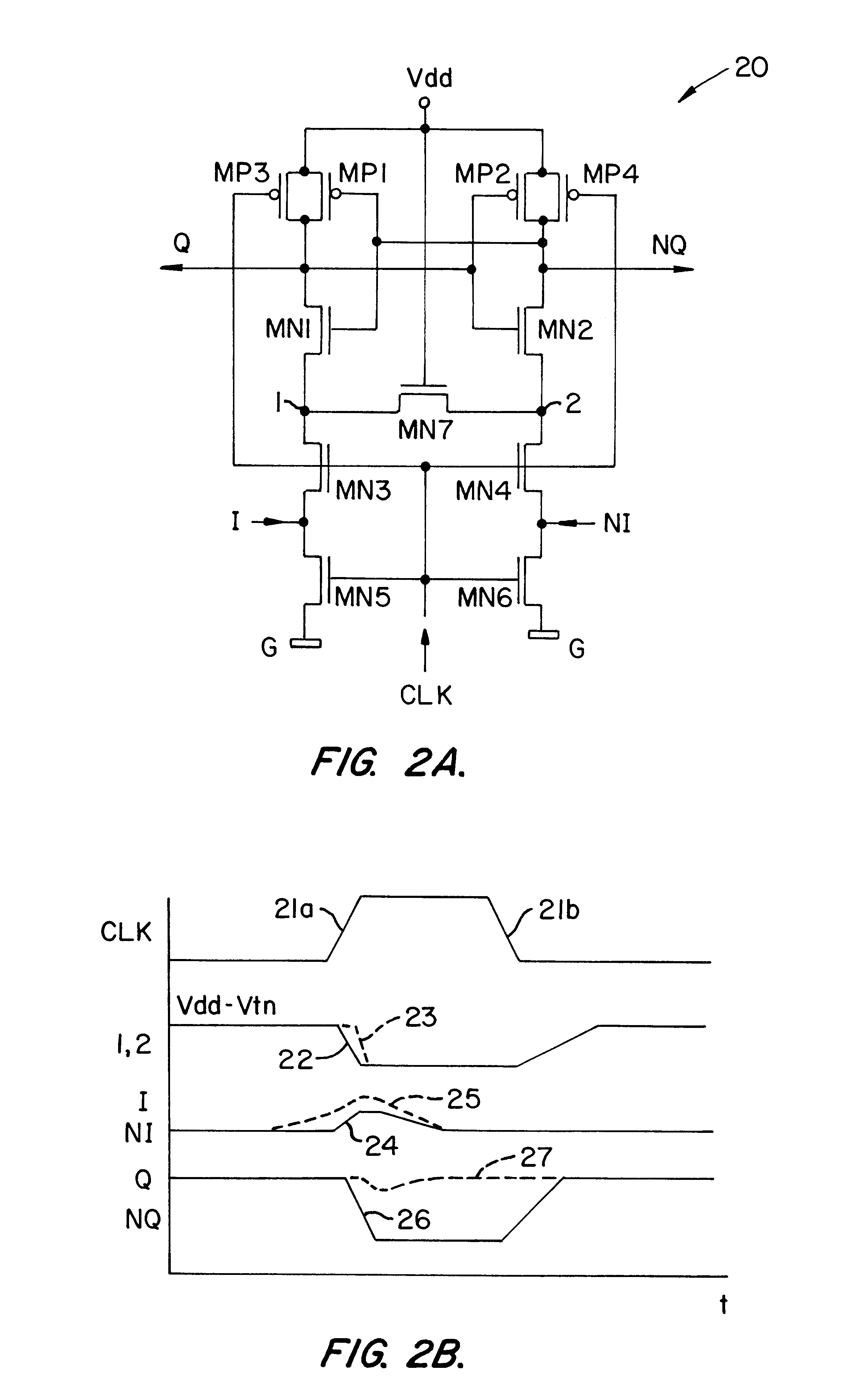High-speed low-power sense amplifying half-latch and apparatus thereof for small-swing differential logic (SSDL)
a low-power, high-speed technology, applied in the field of sense amplifiers, can solve the problems of limiting conductivity, p-channel transistors to be made larger, and affecting speed and loading characteristics
- Summary
- Abstract
- Description
- Claims
- Application Information
AI Technical Summary
Problems solved by technology
Method used
Image
Examples
Embodiment Construction
Referring to FIG. 2A a CMOS sense amplifier 20 according to the present invention is shown. A timing diagram, illustrating operation of the sense amplifier 20, is shown in FIG. 2B. As FIG. 2A shows, the sense amplifier 20 includes a cross-coupled pair of inverters (transistors MP1 / MP2 and MN1 / MN2), a control circuit, including transistor pairs MN3 / MN5 and MN4 / MN6 that couple nodes 1 and 2 to inputs I and NI and to a ground potential G, a recovery circuit (transistors MP3, MP4) and an acceleration transistor MN7 coupled between nodes 1 and 2 and with a gate lead coupled to the supply voltage, Vdd.
FIG. 2B is a timing diagram for the sense amplifier 20. In FIG. 2B, the dotted lines 23, 25, and 27 represent the potentials at node 1, input I and output Q, respectively.
Sense amplifier FIG. 2A operates in three states: the precharge state, the sensing or latching state and the recovery state. When the CLK signal is low, the on transistors MP3 and MP4 are on, the transistors MN3 / MN5 and MN4...
PUM
 Login to View More
Login to View More Abstract
Description
Claims
Application Information
 Login to View More
Login to View More - R&D
- Intellectual Property
- Life Sciences
- Materials
- Tech Scout
- Unparalleled Data Quality
- Higher Quality Content
- 60% Fewer Hallucinations
Browse by: Latest US Patents, China's latest patents, Technical Efficacy Thesaurus, Application Domain, Technology Topic, Popular Technical Reports.
© 2025 PatSnap. All rights reserved.Legal|Privacy policy|Modern Slavery Act Transparency Statement|Sitemap|About US| Contact US: help@patsnap.com



